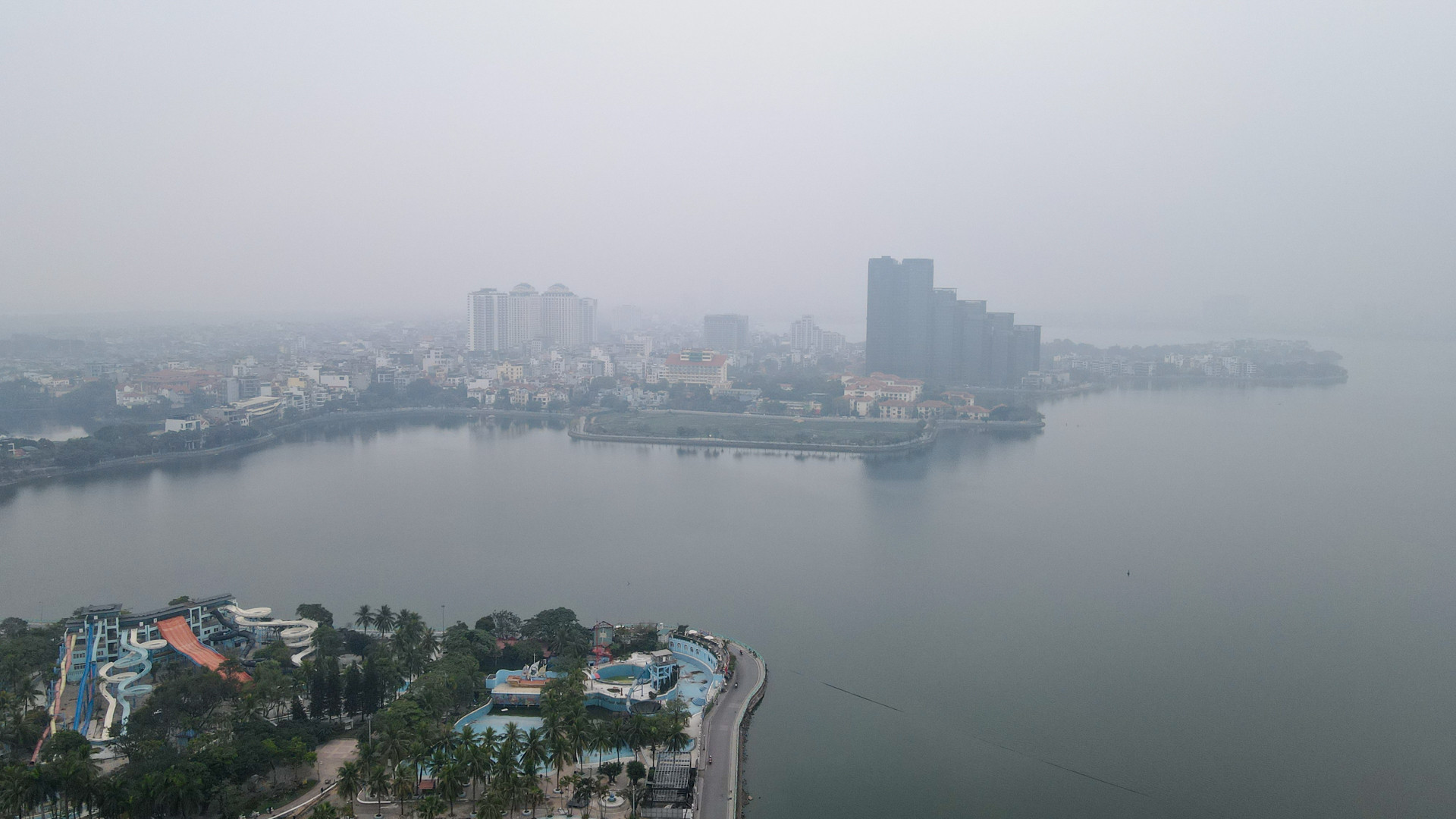Air pollution in Hanoi and Ho Chi Minh City has frequently reached alarming levels, severely affecting public health and daily life. According to the Ministry of Agriculture and Environment (MARD), urgent and comprehensive solutions are required to tackle the crisis.

Based on real-time data from air quality monitoring platform IQAir, at 7:30 a.m. on April 12, Hanoi’s Air Quality Index (AQI) stood at 174, ranking second among the world’s most polluted cities. The level was marked in red, meaning “unhealthy.”
Meanwhile, Ho Chi Minh City recorded a yellow or “moderate” AQI level and ranked 34th out of 125 cities.
Earlier on January 7, 2025, Hanoi topped the global pollution ranking with an AQI of 264, categorized as “very unhealthy.” Ho Chi Minh City ranked third with an AQI of 193 - also in the red zone.
Multiple sources of air pollution
According to the Ministry of Agriculture and Environment, environmental pollution in major urban centers has worsened in recent years, particularly in the Northern Key Economic Region surrounding Hanoi and the Southern Key Economic Region centered around Ho Chi Minh City.
Primary pollutants include road dust, PM10, and fine particulate matter PM2.5, with pollution peaking during the colder months from October to April. Hanoi experiences worse pollution than Ho Chi Minh City due to unfavorable weather and climate conditions.
The main sources of pollution, as identified by the ministry, include traffic activities: road dust, emissions from old and dilapidated vehicles, diesel-powered trucks, and uncovered construction material transport - especially in Hanoi.
Industrial production is another major contributor, particularly in the construction materials, cement, thermal power, and steel sectors.
Rapid urbanization has also played a role. Many construction projects lack proper shielding or dust control measures, leading to widespread airborne particles.
Open burning is another cause - burning of trash, agricultural waste, or biomass for heating, cooking, and ceremonial practices such as burning joss paper. These activities are common in trash collection sites, rice fields post-harvest, street food areas, and urban residential zones.
Hanoi’s geographical and climatic features exacerbate the problem. The city is surrounded by high mountains to the west, with high humidity, low rainfall, and frequent temperature inversions, all of which prevent pollutants from dispersing and cause them to accumulate.
Restricting old vehicles, limiting truck access during peak hours
Deputy Minister Le Cong Thanh stated that air pollution is becoming increasingly complex and beyond the scope of localized control. The ministry has proposed that the government implement a series of comprehensive and coordinated measures.
For immediate action, the Ministry suggests that major cities - especially Hanoi and Ho Chi Minh City - intensify street cleaning, spray water to reduce dust, and increase urban greenery. Construction sites that generate dust must be closely monitored, and access by trucks during rush hours as well as use of old vehicles must be restricted.
The ministry also recommends reviewing and updating emissions control policies, offering incentives for green transport solutions, and setting technical standards for automated emissions monitoring systems.
A centralized data system is being proposed to integrate alert, command, and monitoring capabilities - connecting emissions sources and publishing real-time data to the public.
To better manage emissions sources, the ministry calls for a full inventory and classification system to accurately identify pollution levels by area. Facilities violating regulations will face strict penalties.
For vehicular emissions, the ministry advocates expanding environmentally friendly public transportation and limiting private car usage.
Hotspots will be equipped with smart sensors to detect and issue early warnings, especially in areas prone to open burning or sudden emissions surges.
Vu Diep